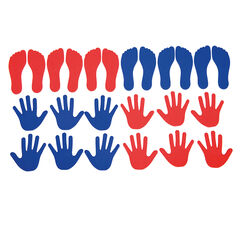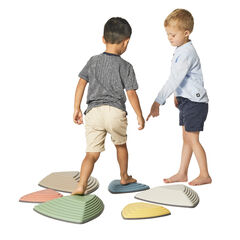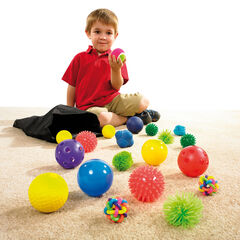Environments change our moods and emotions. They can affect our motivations, our energy levels, our actions or our movements. Take a moment to think about a visit to a café or restaurant recently and how you felt when you walked in. How did the décor and layout make you feel? Did the acoustics enable you to talk to friends or colleagues? Was there a menu at hand which was easy to navigate? Was there enough choice to meet everyone’s needs? And how were the staff? Were they engaged, enthusiastic, motivated, helpful?
All of these factors will influence whether we stay, how we engage with others, what and how much we order and whether we will visit again. The whole environment plays a part.
So, much like this scenario, to enable children to be active and to support their physical development, I believe we need to consider the environment we provide, and whether it creates a positive atmosphere for movement. A place with space to be active, with resources to encourage movement and generate interest, and of course staff to enthuse, motivate and support.
So what might this active environment look like?
Firstly, let’s think about the children in our care and what their needs are. As humans we all develop in the same pattern. Watch out, here’s the technical explanation! We develop from the head downwards. This is known as cephalocaudal development and we develop from the inside outwards, known as proximodistal development. We all develop in this pattern unless sometimes when there is a disability. But, we all develop at a different rate, meaning each child will not all be at exactly the same developmental stage as the next child. So our environment needs to meet everyone’s needs.
We know that all the children in our care are unique, so it’s useful to look around us and see how our environment will enable each and every child to be active and develop physically. As with the café and restaurant analogy above, I believe we need to think about environment in its widest sense. Think about how your environment and the senses are used to encourage movement and support physical development.
Sound
Firstly, let’s think about sound, do you play music to encourage movement and dance? How about resources that make different sounds, vibrations, tones? And very importantly, are there resources that enable children to make their own sounds such as by banging, drumming, shaking?
And how about the role of adult voices, songs, action rhymes and words such as “wow”, “zoom”, “boing”, “whizz”. Words that mimic and those that provide context and motivation can all help encourage movement and in turn physical development.
Touch
Then when we reflect on our setting’s use of touch to encourage and support child development. Do we consider the variety of textures available, for example soft, squishy, bumpy, lumpy, rough, bobbly? All can entice, encourage and stimulate. Textures can encourage different movements including stroking, patting, grabbing, squeezing, bouncing. They can support gross and fine motor skills.
Think about what textures your resources provide.You might want to consider resources, such as a collection of multi-sensory textured balls or a variety of different bean bags.
Also think about the larger equipment that may be available, such as climbing frames and resources with smooth sides and rails, such as this Pikler Inspired Climbing Set.

Think about rubber or sponge mats. flooring or stepping stones as these can provide different textures for the feet. Remember our feet have 1000s of receptors that when in contact with different textures send messages to the brain helping us make sense of the world around us.
Visual Aspects
Also consider the colour and visual impact of the environment. Maybe it’s bright primary colours that stimulate and draw attention to certain areas of a setting or certain play resources. Or maybe a calm, neutral colour palette helps children not to become over-stimulated and helps them focus. Or, maybe a combination of both works well?
A few things to consider include displaying images in your settings or mirrors for children to move towards, to see their reflection in?
You could also include some Rubber Floor Markers to help guide the children around the space.
People
And finally, our environments are hugely influenced by the people in them. We need to support positive movement behaviours and reinforce that activity is the norm by being active ourselves. Children will copy and imitate, whilst adult led activities can be really helpful in helping reluctant children engage.
So let’s consider the environment as an essential tool in helping our children develop physically.
You may find the Early Years Physical Literacy framework a helpful tool to support your setting.
Thank you to Philippa Youlden for writing this blog for us.
Philippa Youlden is a freelance PE, sport, wellbeing and education consultant passionate about the power of movement, activity and high quality PE and school sport opportunities for all children. Philippa works nationally delivering CPD, developing educational campaigns and writing resources for a range of organisations and school networks, supporting children to enjoy, thrive and fulfil their potential through PE, sport and physical activity. www.philippayoulden.co.uk
You can also take a look at WELLNESS with Zip Active to support EYFS and KS1 Wellbeing through physical activity, and MOVE with Zip Active supporting EYFS and KS1 fundamental movement skill development and communication and language through movement.















